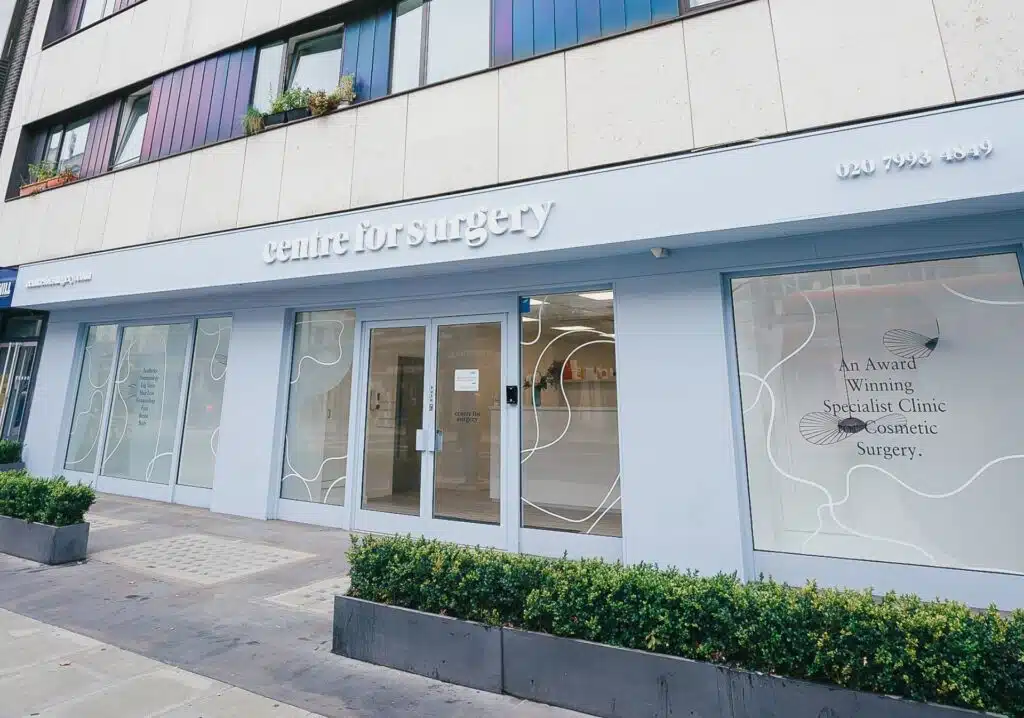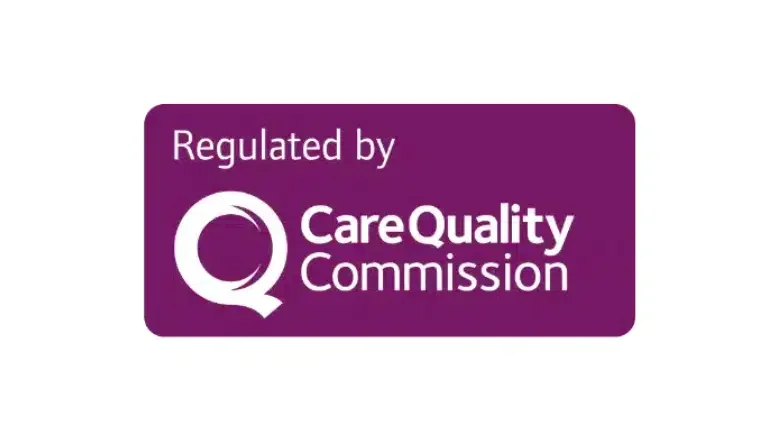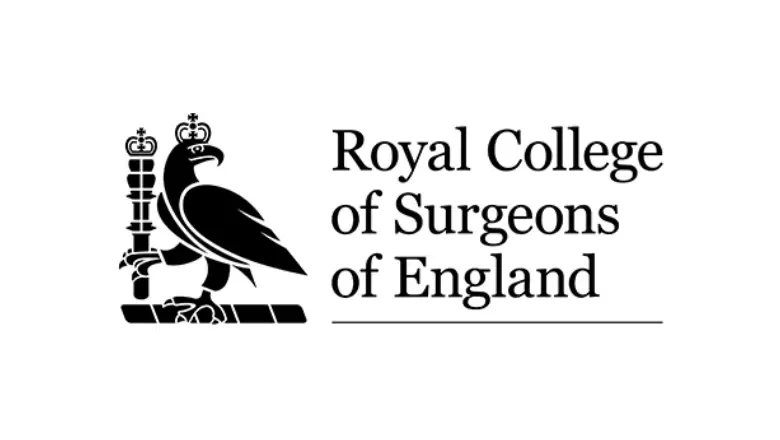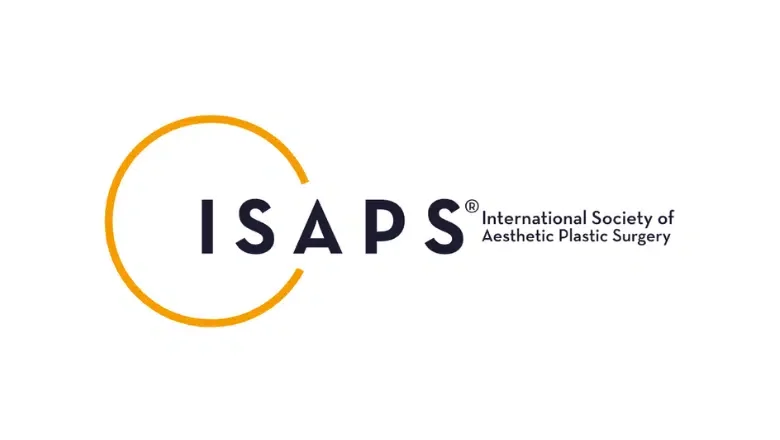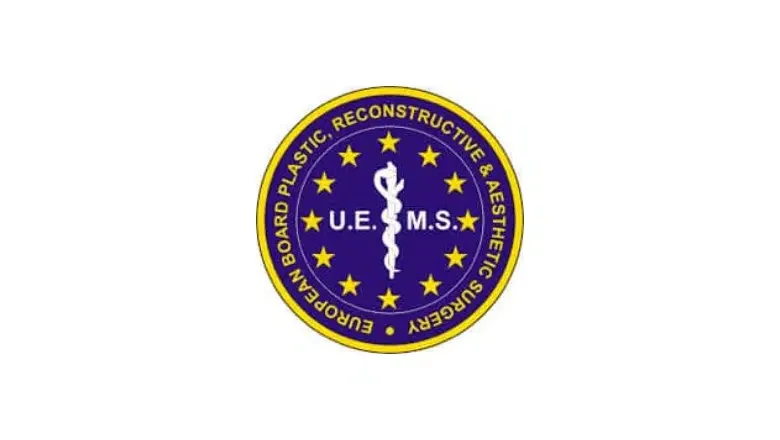Torn Ab Muscles and Diastasis Recti: What You Need to Know and How to Fix It
Are you finding that you still look like you’re pregnant even though it’s been months since you had your baby? Are you having difficulty with feeling like your stomach muscles are weaker than they should be? Perhaps you’re even experiencing back pain and your belly seems to be getting bigger instead of smaller? If this sounds like you, you could be dealing with a condition known as Diastasis Recti, also referred to as torn stomach muscles. This article will go into depth about what it means to have separated abdominal muscles and provide you with all the information you need to determine if this condition occurred during your pregnancy. If you’re looking for a solution, we’ll also discuss tummy tucks as a surgical option to address this issue.
RELATED: Split Tummy Muscles after Pregnancy – Treatments for Diastasis Recti
What Is Abdominal Separation?
Abdominal Separation, also known as Diastasis Recti, happens when the outermost layer of your stomach muscles splits down the middle of your abdominal wall. Although this condition often occurs during pregnancy, it’s not exclusive to women; men and athletes can experience it too. Sometimes, this abdominal muscle separation could be an indicator of other medical issues like a hernia.
Many women who develop torn stomach muscles during pregnancy do find improvement in the first eight weeks following childbirth. This improvement often comes with the aid of special exercises targeting abdominal separation. However, it’s unfortunate that many women don’t get a proper diagnosis until the condition has worsened to a point where exercises alone may not be sufficient for treatment.
Separated abdominal muscles are a fairly common after-effect of giving birth. When the core muscles are destabilised in this way, it can lead to various problems such as lower back pain, poor posture, and even muscle injuries. A woman suffering from this condition may notice that her abdomen appears wider and uneven, and she may also experience persistent back pain. What makes this condition even more frustrating for many new mums is the misconception that they are somehow to blame for not getting back to their pre-pregnancy belly shape. In reality, diastasis recti can make it incredibly difficult, if not nearly impossible, to regain your former belly shape without surgical intervention, like an abdominal separation surgery.
Understanding why torn stomach muscles occur and how they can be corrected is essential for those dealing with this condition. So, if you find yourself struggling with symptoms like these, it’s crucial to get a proper diagnosis and explore your treatment options.
Abdominal Separation: Causes and Symptoms
What Causes Diastasis Recti?
Diastasis recti is quite common during and after pregnancy. Estimates suggest that between 60 and 70% of women who have been pregnant will experience some degree of abdominal muscle separation after giving birth. The condition primarily stems from the hormonal changes and physical stress that pregnancy places on the body. Specifically, the connective tissue known as the linea alba thins out as hormone levels change during pregnancy, and simultaneously, the uterus expands to make room for the growing baby.
As the baby grows inside the womb, the uterus pushes against the abdominal wall. Meanwhile, pregnancy hormones soften the connective tissue between your abdominal muscles, causing the linea alba to widen. This creates a separation or gap in the abdominal muscles, most commonly during the third trimester. The condition can persist postpartum, especially when the weakened abdominal muscles no longer have a baby to support them.
What Are the Symptoms of Torn Stomach Muscle?
- Lower back pain
- Pelvic pain
- Muscle weakness
- Bloating and digestive problems
- Leakage of urine
- Constipation
After giving birth, one of the most telling signs that you’re dealing with abdominal separation is if your belly still sticks out and looks pregnant despite your best efforts with diet and exercise. If you’re struggling to get rid of the bulging belly post-pregnancy, surgical intervention might be a consideration.
One of the best surgical options available is Fleur De Lis Abdominoplasty. This procedure can be a life-changer for those concerned about their postpartum body appearance. It aims to tighten and firm the belly, helping it return to a shape closer to what it was before pregnancy. If you’re keen on understanding more about this and other surgical solutions, you can explore the various benefits of tummy tuck surgery, also known as Abdominoplasty.
Who is Most Likely to Experience Diastasis Recti?
Although many women experience abdominal separation during their pregnancy, some are more susceptible to this condition than others. So, who are the women most at risk? Generally speaking, if you’ve had more than one baby or if someone in your family has had diastasis recti, you’re more likely to experience it yourself. Let’s delve deeper into the specific circumstances or traits that could increase your risk:
Multiple Pregnancies
If you’ve had more than one pregnancy, your abdominal muscles have been stretched multiple times, making them more susceptible to separation.
Petite Body Frame
Women with smaller body frames may have less room for their baby to grow within the abdomen, putting extra pressure on the abdominal muscles.
A Past Pregnancy Resulting in Muscle Separation
If you’ve previously had diastasis recti during an earlier pregnancy, you’re at a higher risk of experiencing it again.
Poor Abdominal Muscle Tone, Overweight or Obesity
If your abdominal muscles are weak or if you are carrying extra weight, the strain on your abdominal wall can be greater, leading to a higher chance of experiencing diastasis recti.
Consecutive Pregnancies
If you become pregnant shortly after giving birth, your abdominal muscles may not have had sufficient time to heal, increasing the risk of muscle separation.
Delivering a Baby with a High Birth Weight or Multiple Babies
If you’re carrying a large baby or twins, triplets, etc., there’s extra strain on the abdominal wall, which may cause the muscles to separate more easily.
Poor Posture
Poor posture can exacerbate the strain on already weakened or separated abdominal muscles, making the condition worse.
What Does Diastasis Recti Actually Look Like and How Can You Check for It?
If you’re wondering whether you have diastasis recti or abdominal muscle separation, you can either perform a self-assessment or seek advice from a healthcare professional like your GP or midwife. However, before you start checking yourself, it’s crucial to give your body adequate time to recover post-pregnancy. Recovery time varies from several months to up to two years. It’s also a good idea to stick to a healthy diet and exercise regimen to see if your body can naturally heal itself.
Diastasis recti is generally identified by measuring the gap between your inner abdominal muscles, also known as the rectus abdominis. If you can fit two or more fingers into this gap, it’s a sign of diastasis recti. Generally, there are three primary signs that suggest your abdominal muscles may have separated during pregnancy:
- A visible gap in the middle of your abdomen that measures more than two finger-widths.
- The gap doesn’t shrink when you tense your abdominal muscles.
- You notice a protruding mound along your midline.
If you’ve been leading a healthy lifestyle for over six months, eating well and exercising, yet you’re still experiencing these symptoms, you might consider trying the following self-assessment technique.
How to Conduct a Self-Assessment for Diastasis Recti
Here’s a 4-step guide to find out whether you’re dealing with abdominal separation:
Get Comfortable
Lie down on your back, bending your knees at a 45-degree angle. Make sure to tuck in your pelvis and relax your spine. Take a few deep breaths to help you relax.
Contract Your Pelvic Floor
Tighten your pelvic floor muscles while lifting your head slightly and tucking your chin towards your chest.
Feel for the Gap
Start by placing your fingers at the bottom of your ribcage and walk them down towards your belly button. If there is a separation between the muscles, you’ll be able to feel it.
Check the Texture
If you do find a gap, press down gently to gauge its feel. Diastasis recti will feel soft and spongy, unlike strong, firm muscle tissue.
Exercises for Separated Abdominal Muscles: What Can You Do?
If you’ve found that you have separated abdominal muscles, you might be wondering what you can do to help improve the situation. While certain exercises can indeed help strengthen the abdominal area, it’s important to note that severe cases of diastasis recti are typically not fully repairable without surgical intervention.
Exercise Types to Consider
Pilates, yoga, cardio, and strength training can all contribute to stronger core muscles. However, before diving into any advanced exercises, it’s advisable to consult a physiotherapist or a fitness coach. This is to make sure you’re doing exercises that are appropriate for your condition.
Be Cautious with Certain Exercises
You should be particularly cautious when considering exercises like planks and crunches. Done too soon or incorrectly, these exercises can actually make your abdominal separation worse. If your condition is relatively mild, you might start with gentler Pilates-based exercises such as:
- Pelvic tilts
- Cat cows
- Toe taps
- Leg extensions
Important Note During Exercise
When you’re doing any of these exercises, it’s crucial to keep your navel pulled in towards your spine rather than pushed out. This helps ensure that you’re not exacerbating the condition.
Limits of Exercise
While these exercises can indeed strengthen your core, they won’t magically make separated muscles rejoin. So if you find that the exercises are difficult to perform or you’re experiencing back pain or muscle weakness, it’s a sign that you need professional medical advice.
When to Seek Professional Help
If you’re struggling with these exercises or have concerns about your condition, it’s advisable to consult a healthcare professional. Whether it’s your GP, gynaecologist, physiotherapist, or even a plastic surgeon, they can conduct a thorough examination to evaluate the extent of your abdominal separation. They can also guide you on the best treatment options for your condition, giving you the best chance of recovery, even if that includes considering surgical options.
Tummy Tuck Surgery: A Solution for Diastasis Recti
If you’ve been waiting for months or even years for your tummy to regain its original shape, and your separated abdominal muscles (diastasis recti) haven’t improved, you might consider surgical intervention as the next step. Abdominoplasty, more commonly known as a tummy tuck, can offer a lasting solution.
RELATED: Combining Tummy Tuck and Hernia Repair Surgery
What Can Tummy Tuck Surgery Do?
Performed by a specialist plastic surgeon, a tummy tuck can restore separated abdominal muscles and also address any issues related to loose, excess skin. The aim of the surgery is not just medical; it also serves a cosmetic purpose by creating a smoother, firmer tummy profile.
Things to Consider Before Surgery
Timing
It’s crucial to wait for at least a year after childbirth before opting for diastasis recti surgery. This allows enough time for your body to naturally heal and for diet, exercise, and physical therapy efforts to show results.
Hormones and Breastfeeding
Breastfeeding can affect your abdominal muscles due to hormone fluctuations. If you’re nursing, it’s recommended to wait a few months after you’ve stopped breastfeeding before considering surgery.
Be Aware of the Risks
Like any surgical procedure, tummy tucks come with risks, which can range from undesirable scarring to poor recovery. It’s crucial to understand all the possible outcomes and read about the general risks associated with surgery.
Realistic Expectations
It’s important to note that a tummy tuck is not a weight loss surgery. You should be close to your ideal weight before undergoing the procedure. The surgery mainly aims to remove excess skin and correct the ‘mummy tummy’ caused by separated abdominal muscles.
Combining with Liposuction
If your primary goal is not just to repair the abdominal muscles but also to remove excess fat, your surgeon might suggest combining the abdominoplasty with liposuction. This would be discussed during your initial consultation.
By weighing all these factors, you can make an informed decision about whether abdominoplasty is the right solution for you. This is a significant decision, so ensure you consult with experienced healthcare professionals, like those at Centre for Surgery in London, to guide you through the process.
Frequently Asked Questions About Torn Stomach Muscles (Diastasis Recti)
Can Diastasis Recti Affect Future Pregnancies?
If you’ve had diastasis recti in a previous pregnancy, you are more likely to experience it in future pregnancies. The condition could also be more severe in subsequent pregnancies. It’s important to consult your healthcare provider for a personalised treatment and monitoring plan if you’re planning on having more children.
What Happens If Diastasis Recti Goes Untreated?
Leaving diastasis recti untreated can lead to worsening symptoms over time. This could manifest in a range of issues such as:
- Severe back pain
- Pain during sexual intercourse
- Urinary incontinence
- The development of an umbilical hernia
Treatment can involve either physical therapy or surgery, depending on the severity of the condition. Exercise regimes can often be effective in treating milder forms of diastasis recti, but for more advanced cases, surgical intervention may be necessary.
When Should I Start Diastasis Recti Exercises?
Exercises aimed at treating abdominal separation can be effective but must be timed correctly. The condition can cause pain and improper core functioning, which can affect your posture and everyday movements. These exercises can be a useful tool in retraining your body to use your abdominal muscles more efficiently.
RELATED: Exercise after Tummy Tuck – top tips
It’s generally advised to begin diastasis recti exercises in the first 6 to 12 months following childbirth, but only after consulting a healthcare professional for a proper diagnosis and tailored treatment plan.
Can Men Get Diastasis Recti?
Yes, while diastasis recti is most commonly associated with pregnancy, it can also affect men. Factors like obesity, frequent heavy lifting, and age can contribute to the development of the condition in men. Like in women, the treatment may involve physical therapy or male abdominoplasty, depending on the severity.
Is Surgery the Only Option for Severe Cases?
For severe cases of diastasis recti, where the abdominal muscles are significantly separated, surgery is often the most effective treatment. However, it’s not the only option. Some individuals have seen improvement through specialised physiotherapy and exercises that target the abdominal muscles. Surgery is usually considered when conservative treatments fail to produce significant improvement.
How Long Does It Take to Recover from Diastasis Recti Surgery?
Recovery times can vary, but most people can expect to return to most normal activities within 6 to 8 weeks following surgery. However, you may need to avoid strenuous activities and heavy lifting for up to 12 weeks. Always follow your surgeon’s postoperative guidelines for the best results and quickest recovery.
Is Diastasis Recti Surgery Covered by Insurance?
Coverage for diastasis recti surgery varies depending on your insurance provider and plan. Some plans may cover it if the condition is causing significant health issues like severe back pain or hernias. You’ll need to check with your insurance company for specific information regarding coverage.
Can Exercise Make Diastasis Recti Worse?
Certain exercises, like crunches and planks, may exacerbate the condition if performed too early or without proper form. It’s crucial to consult a physiotherapist or healthcare provider who can guide you through the right exercise regimen that helps rather than worsens your condition.
Why Choose Centre for Surgery for Your Diastasis Recti Treatment?
Experience & Expertise
Centre for Surgery is a leading specialist clinic in London, dedicated to providing top-notch plastic surgery treatments. Our team of highly skilled and experienced plastic surgeons specialize in treating diastasis recti. We offer a comprehensive range of treatment options, from physiotherapy to state-of-the-art surgical procedures like Fleur De Lis Abdominoplasty.
Personalised Care
We understand that every patient’s needs are unique, which is why we offer personalised consultations to help you understand your treatment options better. Our dedicated care team will guide you through each step of your journey, from initial consultation to post-operative care, ensuring you receive the best possible treatment tailored to your needs.
Cutting-Edge Technology
Our clinic is equipped with the latest technology to ensure your treatment is both effective and safe. Our commitment to staying at the forefront of medical advancements means we can offer minimally invasive options where possible, reducing recovery time and increasing patient comfort.
Patient Testimonials
- Emily, 34, London “Choosing Centre for Surgery was the best decision I ever made. After my second child, my diastasis recti was severe. Not only did they correct the issue, but they also gave me back my confidence. Highly recommend!”
- Sarah, 40, Essex “From the consultation to the post-op appointments, Centre for Surgery exceeded my expectations at every turn. The staff are supportive, and the surgeon’s expertise is evident. My tummy hasn’t looked this good in years!”
- John, 45, London “I never thought as a man I would need such a procedure, but diastasis recti was affecting my life in unexpected ways. Centre for Surgery took great care of me, and the results are fantastic.”
Easy Consultation Booking
Booking a consultation has never been more convenient. You can reach us via phone, email, or by visiting our clinic:
- 📞 Phone: 0207 993 4849
- 📧 Email: contact@centreforsurgery.com
- 📍 Address: 95-97 Baker Street, London W1U 6RN
Centre for Surgery is not just a clinic; it’s a community of specialists and patients who understand that your well-being is a priority. Let us be part of your journey to a healthier, more confident you. Book your consultation today.

